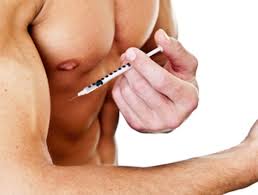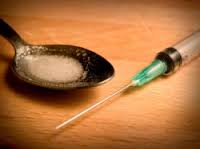Elaborate information about Heroin addiction
Elaborate information about Heroin addiction: What is heroin?

Elaborate information about Heroin addiction is very necessary for the proper administration of treatment
Have you ever imagine life free of any kind of substance abuse? The benefits of that will be overwhelmingly very healthy and productive. That is the kind of life that we are championing for you and your family as experts from AWAREmed Health and Wellness Resource Center under the able leadership of doctor Dalal Akoury who is also the founder of the facility. In her over two decades of practice in medicine and in matters addiction in particular, doctor Akoury has over the years been a champion of addiction solutions to many victims globally. She says that for anyone to effectively deal with drug addiction, every individual needs to be well equipped with elaborate information about heroin addiction and all other substance of abuse including alcohol miss use. Because many people are suffering because of lack of knowledge doctor Akoury founded this facility and she has been using it as a plat form of creating awareness to the societies on matters relating to the protection of their health. In this article, our focus is going to be on the elaborate information about heroin addiction. Therefore what is this drug heroin?
In simple terms, heroin is an illegal and highly addictive drug. It is one of the most abused and also most rapidly acting of the opiates. Heroin is typically sold as a white or brownish powder or as the black sticky substance known on the streets as “black tar heroin.” Doctor Akoury says that although these days purer heroin is becoming more common, most street heroin is “cut” with other drugs or with substances such as sugar, starch, powdered milk, or quinine. Street heroin can also be cut with strychnine or other poisons. Because heroin abusers do not know the actual strength of the drug or its true contents, they are at risk of overdose or death. Heroin also poses special problems because of the transmission of HIV and other diseases that can occur from sharing needles or other injection equipment.
It is believed that originally heroin is processed from morphine, a naturally occurring substance extracted from the seed pod of the Asian poppy plant. Heroin usually appears as a white or brown powder and it is associated with several street names including “smack”, “H”, “skag”, and “junk”. Other names may refer to types of heroin produced in a specific geographical area, such as “Mexican black tar”.
Elaborate information about Heroin addiction: What is the Scope of Heroin use in our societies?
The available statistics is worrying and according to the 1996 National Household Survey on Drug Abuse, which may actually underestimate illicit opiate (heroin) use, an estimated 2.4 million people use heroin at some time in their lives, and nearly 216,000 of them reported using it within the month preceding the survey. The survey report estimates that there were 141,000 new heroin users about two decades ago and that there has been an increasing trend in new heroin use since that time. A large proportion of these new users were smoking, snorting, or sniffing heroin with majority of them being under the age of 26. The report also indicated that the estimates of use for other age groups also increased, particularly among youths age 12 to 17 and the incidence of first-time heroin users among this age group also increased fourfold subsequently from the 1980s to 1995.
Yet in another study the 1996 Drug Abuse Warning Network (DAWN), which collected data on drug- related hospital emergency department (ED) episodes from 21 metropolitan areas, estimates that 14 percent of all drug-related ED episodes involved heroin. Even more alarming was the fact that between 1988 and 1994, heroin-related ED episodes increased by 64 percent that is from 39,063 to 64,013.
NIDA’s Community Epidemiology Work Group (CEWG), which provides information about the nature and patterns of drug use in 20 cities, reported in its December 1996 publication that heroin was the primary drug of abuse related to drug abuse treatment admissions in most cities including Newark, San Francisco, Los Angeles, and Boston, and it ranked a close second to cocaine in New York and Seattle. These statistics clearly shows that heroin addiction is with us and it is time to step forward progressively to root it out from our systems says doctor Akoury. Before we get into how heroin is used, let us further look at another set of studies conducted by NHSDA for more clarity about heroin abuse.
Elaborate information about Heroin addiction: National Household Survey on Drug Abuse (NHSDA)
The 1996 NHSDA shows a significant increase from 1993 in the estimated number of current (once in the past month) heroin users. The estimates have risen from 68,000 in 1993 to whooping 216,000 in 1996. Among individuals who had ever used heroin in their lives, the proportion that had ever smoked sniffed or snorted heroin increased from 55 percent in 1994 to 82 percent in 1996. During the same period, the proportion of users who injected heroin remained about the same, at about 50 percent. With these data it is evident that the prevalence of heroin addiction cannot be ignored any longer. People are literally suffering both in public and in private and it is now time for action. We have able experts at AWAREmed Health and Wellness Resource Center who are well trained and are of high standards of experience to help you go through this problem of heroin addiction. Take that step of faith right now and schedule for an appointment with doctor Dalal Akoury for the commencement of your addiction recovery treatment.
Elaborate information about Heroin addiction: How is Heroin Used?
Now in conclusion of this article let us consider some of the modes of usage of this drug heroin. There are three major ways of administering heroin which usually include injection, sniffing or snorting or through smoking. Typically, a heroin abuser may inject up to four times a day. Available facts indicate that intravenous injection provides the greatest intensity and most rapid onset of euphoria (7 to 8 seconds), while intramuscular injection produces a relatively slow onset of euphoria (5 to 8 minutes). However when heroin is sniffed or smoked, peak effects are usually felt within 10 to 15 minutes. Although smoking and sniffing of heroin do not produce a “rush” as quickly or as intensely as intravenous injection, NIDA researchers have confirmed that all three forms of heroin administration are addictive.
From our observation at AWAREmed Health and Wellness Resource Center, it is becoming clearer that of the three administration applications, injection continues to be the predominant method of heroin use among addicted users seeking treatment not just from our facility but across the board globally. Nonetheless specific studies have also perceived a shift in heroin use patterns, from injection to sniffing and smoking. In fact, sniffing or snorting heroin is now a widely reported means of taking heroin among users admitted for drug treatment in most rehabilitation centers across the globe. Finally it may not matter which method is commonly used, the bottom line is that people are being addicted to the drug and lasting solution must be sought timely. If you are enclosed in this bracket of suffering, talk to us today and we will be more than willing to help you get your life back.
Elaborate information about Heroin addiction: What is heroin?




